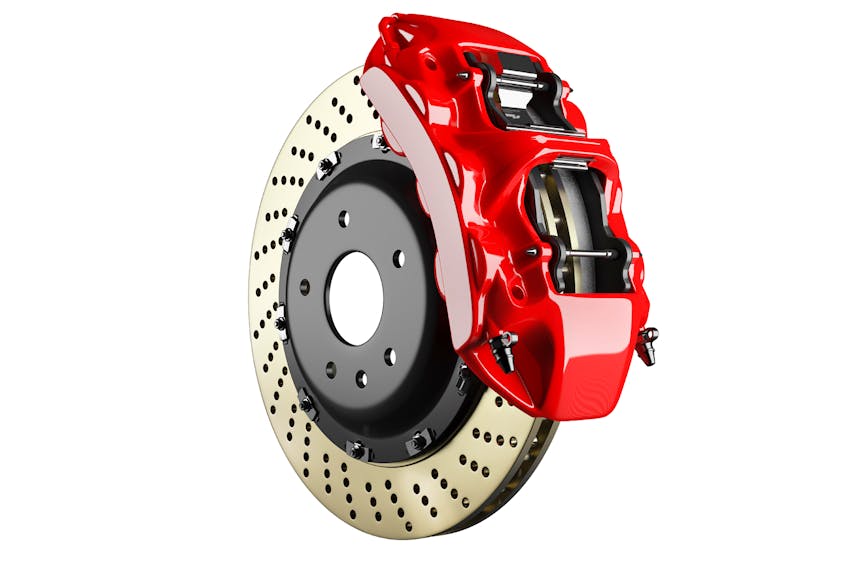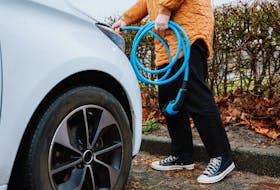Heat! That is what braking creates. When you step on the brake pedal, the brake pads press against the brake rotors and the friction slows the car. It also generates heat — a lot of heat! I have seen race cars where the cast iron brake rotors were so hot that you could see right through them. Brake engineers love to design big brakes so they can absorb that heat and provide better braking, but all that heat is wasted energy. We don’t use it to heat the interior, or the engine, or power the vehicle. It just dissipates to the atmosphere.
Then there are hybrid and electric vehicles. They use regenerative braking. Regenerative braking is simple in concept — use the energy of the vehicle as it slows to create electrical power that can be stored in the vehicle’s battery and then reused. Making it feel right and work smoothly is much more difficult, but regenerative braking is getting better with every generation of electric vehicle introduced. So how much do we gain with regenerative braking?
“Mileage may vary with driver” certainly applies to regenerative braking. At best the conversion of electrical energy into mechanical motion is about 80 per cent. This applies in regenerative braking as well, where converting mechanical motion into electrical energy is about 80 per cent. Mathematically, combining those would give us 80 per cent of 80 per cent which equals about 64 per cent overall efficiency, but it is not that simple. Several factors must be considered: driving terrain (hilly versus flat roads), speed of vehicle when slowing, the mass of the vehicle, the aerodynamic drag and rolling resistance of the vehicle and how the driver decelerates the vehicle.
For hybrid and electric vehicles, stepping lightly on the brake pedal doesn’t apply the mechanical brakes, it starts the regenerative braking. The energy of slowing the vehicle flows from the tires back through the drivetrain and electric motor, which now becomes a generator to put energy back into the battery. For many of these vehicles, regenerative braking takes place automatically. The more you step on the brake pedal, the more electricity is put back into the battery, and if you need to stop faster, pressing harder on the brake pedal will apply the mechanical brakes. There are systems on other vehicles that can enhance regenerative braking.
Toyota’s Prius led the way in hybrid vehicles, and moving the shift lever to the “B” position provides more aggressive regenerative braking during deceleration. The Chevrolet Bolt uses a paddle on the steering wheel to activate Regen on Demand, which slows the car with more aggressive regenerative braking. It can slow the car so much that it can be used in stop and go driving with very little use of the actual brake pedal. Mitsubishi uses five levels of regenerative braking on their Outlander hybrid SUV. Using paddle shifters, the driver can select the desired level, with Level 5 providing the most braking effect and decelerating the vehicle like you are stepping firmly in the brake pedal. The various levels can be used to tailor the braking feel, especially when driving in hilly country. In addition, a button on the console allows the driver control of charging the battery while driving, from the gas engine or just regenerative braking.
Nissan has perhaps the most sophisticated system on their Leaf electric SUV. They use their “e-pedal” to launch, accelerate, decelerate and stop the vehicle using only the one pedal. Releasing the accelerator pedal creates a deceleration to a maximum of 0.2 G, which is similar to stepping on the brake pedal. The regenerative braking will bring the vehicle to a complete stop, where the hydraulic brakes are automatically applied to hold the vehicle stopped on a grade. The driver doesn’t have to operate the brake pedal, controlling the vehicle using only the e-pedal. Brake lights are also automatically activated when the e-pedal system is slowing the vehicle.
An average Leaf driver will regenerate 744kWh of energy in about 18,000 kilometres of driving, which is enough energy to light 10,783 houses with 1000 LED lights for five hours, or power 744 television sets for five hours of viewing, or heat 297 electric ovens for one hour to cook supper. The Nissan Leaf doesn’t provide all these “additional” features but this provides an example of how much energy can be generated during braking.









